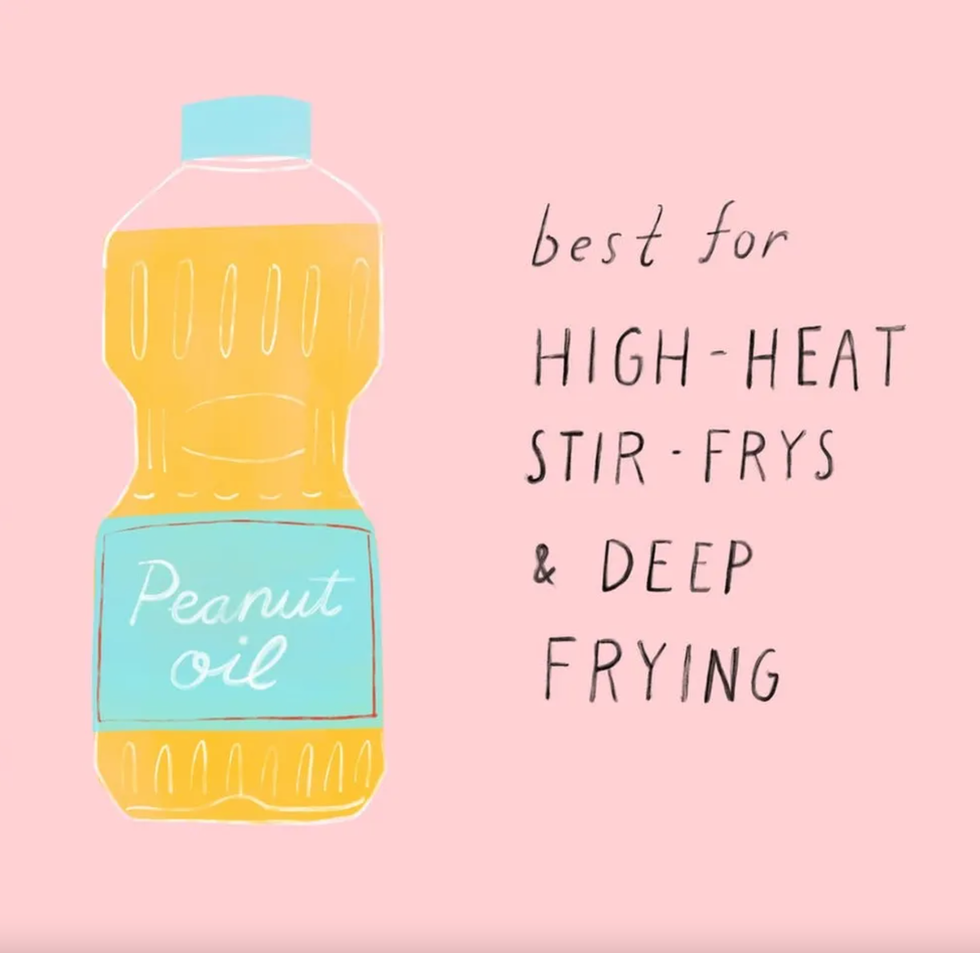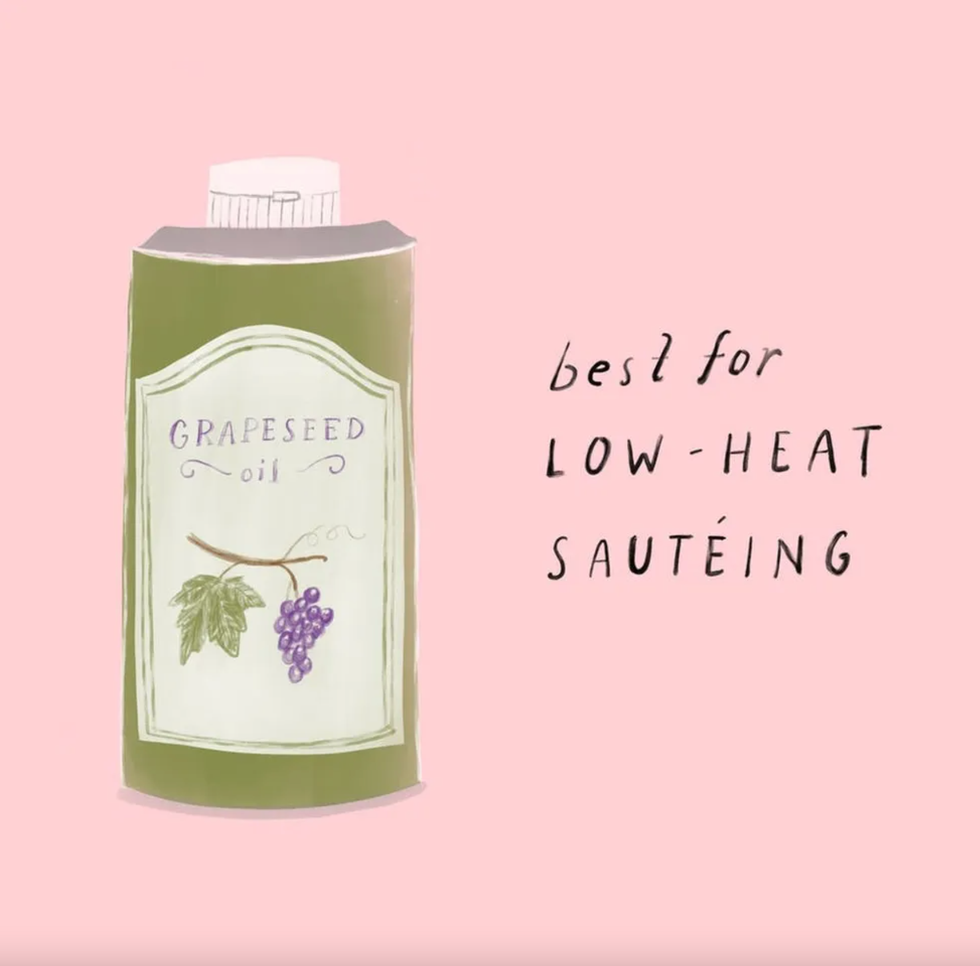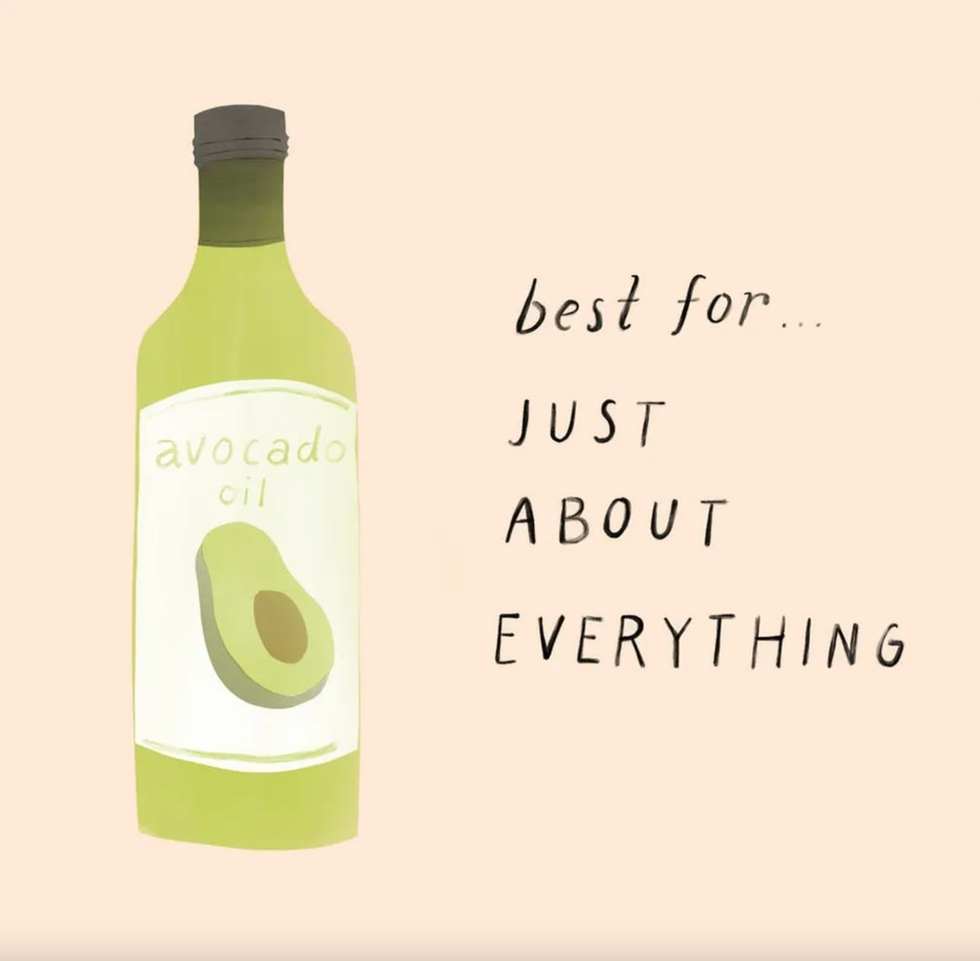Know all your options.
10 Cooking Oils You Should Know About, If You Need To Make A Switch

Though we're mostly past the great cooking oil shortage, you may still be thinking about which cooking oils you want to use in your dishes at home, and if they're even good for your health. There are countless cooking oils from which to choose beyond canola, coconut, or olive oil. And especially as other versions like sunflower, avocado, and grapeseed oil have become more popular, it can be hard to know which ones are best to use for sautéing versus frying. What's a home cook to do? Some of these oils are interchangeable, some are healthier than others, and some have specific uses. Overwhelmed? We're here to help with this easy guide.
Extra Virgin Olive Oil

EVOO is one of the most common household oils, and its true purpose is to be drizzled over goodies like crostini or used in homemade vinaigrettes. You can cook with it, but it has a low smoke point of 325-375 degrees Fahrenheit, which means it burns at a lower temperature than other oils. Your best bet is to save EVOO for uncooked dishes and for dippin' that crusty fresh bread. Beware: It's often mistaken (and misused) for its not-so-virgin counterpart, refined olive oil.
Refined Olive Oil
Refined olive oil is a lot more versatile than EVOO. It can be used for moderate to higher temp cooking because of its 465-degrees-Fahrenheit smoke point. Much like vegetable oil, olive oil can be an all-purpose go-to for roasting or sautéing.
Coconut Oil

Like olive oil, coconut oil comes in both extra virgin and refined options. Extra virgin will taste coconut-y, while refined will have a neutral taste. Coconut oil has a fairly low smoke point of 350 degrees Fahrenheit, but it does the trick when sautéing meat, tofu, or veggies over medium to low heat. And it's a *great* substitute for butter in baking. On top of all that, when you're done cooking with it, you can rub some of that coconut oil on your skin for mega moisturizing.
Peanut Oil

Peanut oil also comes in both regular (peanut-y tasting) and refined (more neutral). If you opt for the regular version, make sure the food plays well with the strong nutty flavor. Pad Thai? Heck yes. With a smoke point of 450 degrees Fahrenheit, refined peanut oil is fab for deep frying — so if you're planning on making some crispy golden fried chicken anytime soon, we highly recommend grabbing yourself some.
Sesame Oil

Sesame oil is best used as a finishing oil. If you're rockin' a stir-fry, adding a little drizzle of sesame oil as you plate the dish is everything. Though it has a smoke point of 350 degrees Fahrenheit, its flavor shines if it's not cooked. Toasted sesame oil will have a more intense flavor than its regular counterpart. Use either in marinades or salad dressings paired with ginger, soy, and citrus fruits like lime, lemon, and orange. The flavor is nutty, so you'll want to reserve it for Asian, Mediterranean, and Middle Eastern foods and forego the sesame oil when cooking Italian.
Grapeseed Oil

Grapeseed oil is a neutral-tasting oil with a smoke point of 390 degrees Fahrenheit. Though it boasts some health benefits, it's very high in omega 6 and 9. Since Americans already have a lot of both of those fats in their diet, so this oil is advised to be used sparingly. Try it when sautéing meat or if you're making homemade mayo!
Vegetable, Corn, and Canola Oil

Vegetable oil, corn oil, and canola oil are all extremely useful. They have a smoke point of 400-450 degrees Fahrenheit, which makes them ideal for high-heat pan frying and deep frying. They also don't carry a strong flavor the way that peanut, sesame, and olive oils do. The downfall? This stuff isn't the best for you health-wise, which is why many are opting for the pricier selections on the shelves, like avocado oil or the gold standard, EVOO.
Avocado Oil

This one, though! Yes, it's on the pricier side (that's probably an understatement), but it's high in healthy fats and makes for a great drizzling AND cooking oil with a smoke point of 375-400 degrees Fahrenheit. Basically, avocado oil does it all (including emptying your wallet). Whether this versatile and buttery-flavored oil is worth the price tag or not is up to you.
For more health tips, check us out on Pinterest, and don't forget to subscribe to our newsletter!
(Illustrations via Yising Chou/Brit + Co)
This article has been updated.



















